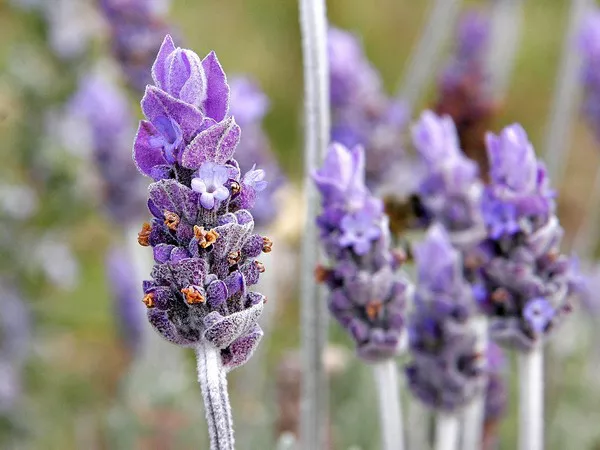Birth flowers hold a special significance as they are believed to represent the unique qualities and traits of individuals born in a particular month. For those fortunate souls born in August, the birth flower is the elegant and vibrant Gladiolus. In this article, we delve into the world of Gladiolus and explore its captivating attributes, historical significance, popular varieties, and the rich cultural symbolism associated with this beautiful flower. Join us as we uncover the secrets and allure of August’s birth flower.
1. The Gladiolus: A Closer Look at the Flower
The Gladiolus, also known as the “sword lily” due to its sword-like leaves, is a genus of perennial flowering plants belonging to the family Iridaceae. Native to South Africa, Gladioli are known for their showy and dramatic appearance, with tall spikes of funnel-shaped flowers that come in an array of striking colors. These magnificent blooms can range from soft pastels to bold hues, including red, pink, orange, yellow, purple, and white.
2. The Gladiolus as August’s Birth Flower
The selection of birth flowers is steeped in history and tradition, with each month associated with a particular flower that holds symbolic significance. For August, the Gladiolus takes center stage, embodying traits such as strength, integrity, and infatuation. Its name is derived from the Latin word “gladius,” meaning sword, which not only references the flower’s leaves but also symbolizes honor and victory.
3. Historical Significance and Cultural Symbolism
Throughout history, the Gladiolus has been regarded as a symbol of various virtues and sentiments across different cultures:
Strength and Tenacity: Due to its tall and upright growth, the Gladiolus has been associated with strength, resilience, and determination. In Roman times, gladiators wore Gladioli to represent their courage and valor during battles.
Infatuation and Love: The Gladiolus has also been linked to romantic feelings, especially in the Victorian era, where flowers were used to convey emotions that could not be openly expressed. Giving a Gladiolus bouquet symbolized love at first sight or an intense attraction towards someone.
Remembrance and Sincerity: In some cultures, Gladioli are used to express heartfelt condolences and are often included in funeral arrangements as a symbol of remembrance and sincerity.
4. Popular Gladiolus Varieties
With over 260 species and numerous hybrid varieties, Gladioli offer an extensive range of choices for gardeners and floral enthusiasts alike. Some of the popular Gladiolus varieties known for their stunning blooms include:
Gladiolus ‘White Prosperity’: This classic white variety exudes purity and elegance, making it a favored choice for weddings and formal events.
Gladiolus ‘Black Surprise’: Contrary to its name, this variety showcases deep velvety maroon flowers, adding drama and sophistication to any floral arrangement.
Gladiolus ‘Pink Ruffles’: As the name suggests, this variety boasts ruffled pink blooms, evoking a sense of charm and grace.
Gladiolus ‘Green Star’: With its unique chartreuse green hue, ‘Green Star’ stands out among other Gladioli, making it a sought-after variety for contemporary floral designs.
5. Growing Gladiolus: Tips for Cultivation
Cultivating Gladiolus can be a rewarding experience, and with the right care, these splendid flowers can thrive and bloom abundantly. Consider the following tips for successful Gladiolus cultivation:
Planting Time: Gladiolus bulbs should be planted in the spring, once the danger of frost has passed and the soil has warmed up.
Sunlight: Gladioli thrive in full sunlight, so select a location that receives at least 6 to 8 hours of direct sunlight daily.
Well-Draining Soil: Ensure the soil is well-draining and rich in organic matter to promote healthy root development and prevent waterlogging.
Planting Depth: Plant the bulbs about 4 to 6 inches deep and space them 6 to 8 inches apart to allow adequate airflow and prevent crowding.
Watering: Keep the soil consistently moist but not waterlogged. During dry spells, provide supplemental irrigation to prevent the soil from drying out completely.
Support Stakes: As the Gladiolus stems grow tall, they may require support stakes to prevent them from bending or toppling over.
Deadheading: Remove faded flowers regularly to encourage continuous blooming and divert energy into producing new buds.
6. Gladiolus in Floral Arrangements and Landscaping
Gladioli’s stunning appearance and diverse color palette make them highly versatile for various floral arrangements and garden landscapes:
Cut Flower Arrangements: Gladioli are popular choices for creating eye-catching floral displays due to their tall spikes and striking colors. They add height and elegance to bouquets and can be paired with other complementary flowers to create captivating arrangements.
Garden Borders: Planted in rows or groups, Gladioli can form stunning borders that add vertical interest and a pop of color to garden beds.
Mass Plantings: Large swaths of Gladioli in the landscape can create a dramatic and breathtaking effect, especially when multiple colors are mixed together.
Container Gardening: Gladiolus bulbs can be grown in containers, allowing for easy movement and flexibility in landscaping and garden design.
Conclusion
August’s birth flower, the Gladiolus, with its majestic beauty and profound symbolism, continues to enchant and inspire people around the world. From its association with strength and love to its diverse range of varieties and cultivation tips, Gladioli hold a special place in both gardens and floral arrangements. As we celebrate the birth flower of August, let us appreciate the elegance and charm that these captivating blooms bring to our lives, serving as a reminder of the virtues they embody and the emotions they convey.


